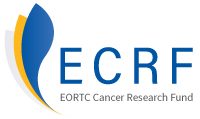The prostate gland, found only in men, is situated between the bladder and the rectum. Prostate cancer is
the second most frequently occurring cancer in men, after lung cancer, and accounting for almost 1.4 million new cases and 375,000 deaths worldwide in 2020. It is the most frequently diagnosed male cancer in over half of the countries across the world. Although the highest number of diagnoses are found in higher-income countries, deaths do not follow this pattern, with the highest number being found in the Caribbean, sub-Saharan Africa, and Micronesia/Polynesia. These differences are most likely due to the widespread introduction of screening in higher-income countries, which has allowed early detection.
Patients with prostate cancer that cannot be halted by lowering testosterone levels (castration-resistant cancer), and where the cancer has spread (metastasised) to their bones, are usually treated with the chemotherapy drugs Ra-223, enzalutamide, and abiraterone. Evidence indicated that giving Ra-223 together with one of the other two drugs as soon as bone metastases appeared might be beneficial. But an EORTC trial was halted when it became clear that giving Ra-223 with abiraterone significantly increased the risk of patients suffering bone fractures. Following this finding, new guidelines were issued stating that medication to protect the bones should be added whenever Ra-223 is given.
As a result, the PEACE III trial, which was comparing the outcomes of the use of Ra-223 plus enzalutamide with enzalutamide alone in castration-resistant patients with bone metastases, started to give bone-protecting agents to both groups. The researchers were able to study results from the patients who had started treatment earlier, before the introduction of bone protection, and found that one year after treatment the risk of fracture in the group who received the drug combination was considerably higher than in those who received enzalutamide alone. However, they were also able to see that with the later addition of bone-protecting treatment, this risk had almost disappeared, and thus confirm that bone protection gives patients a better quality of life.
The PEACE III trial is continuing, and full results from the comparison of the two treatments plus bone protection will be available after it closes.
Study coordinator: Prof. Bertrand F. Tombal



